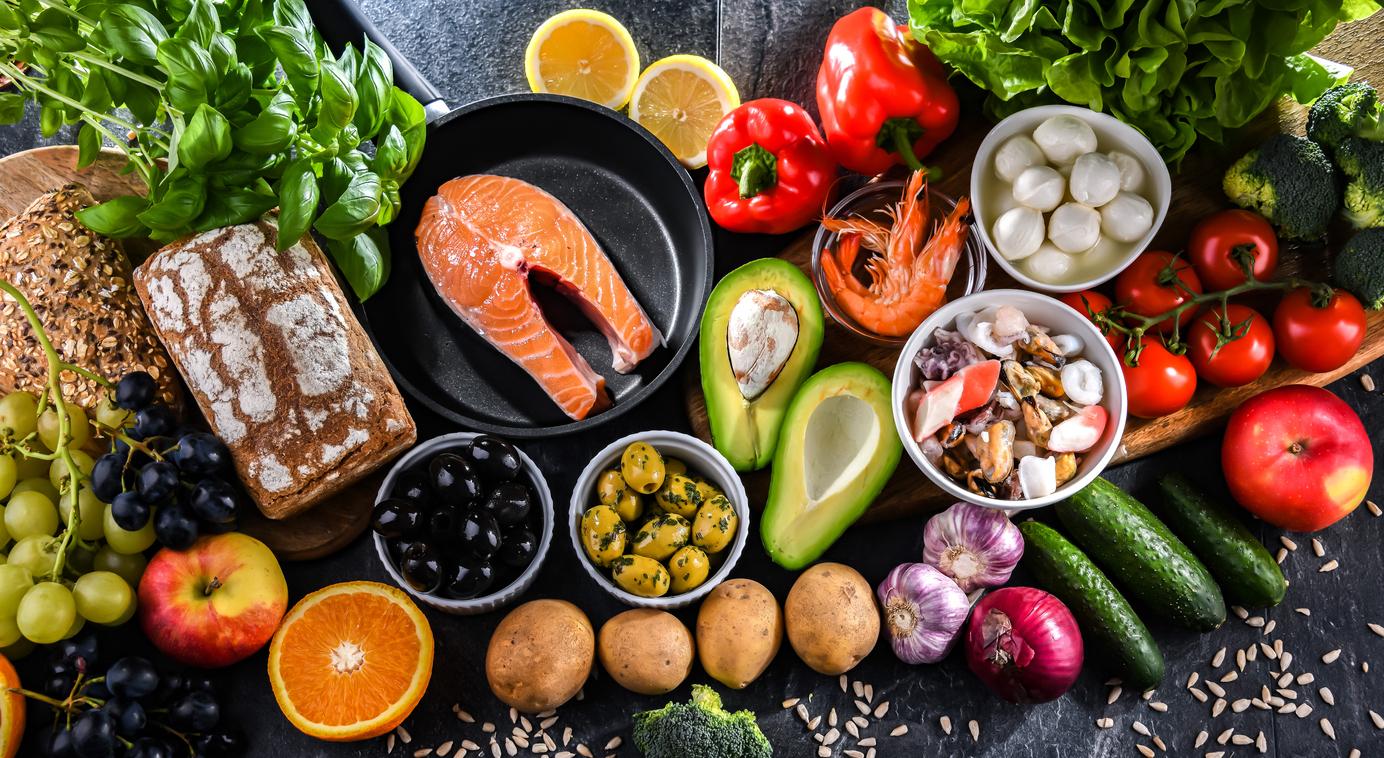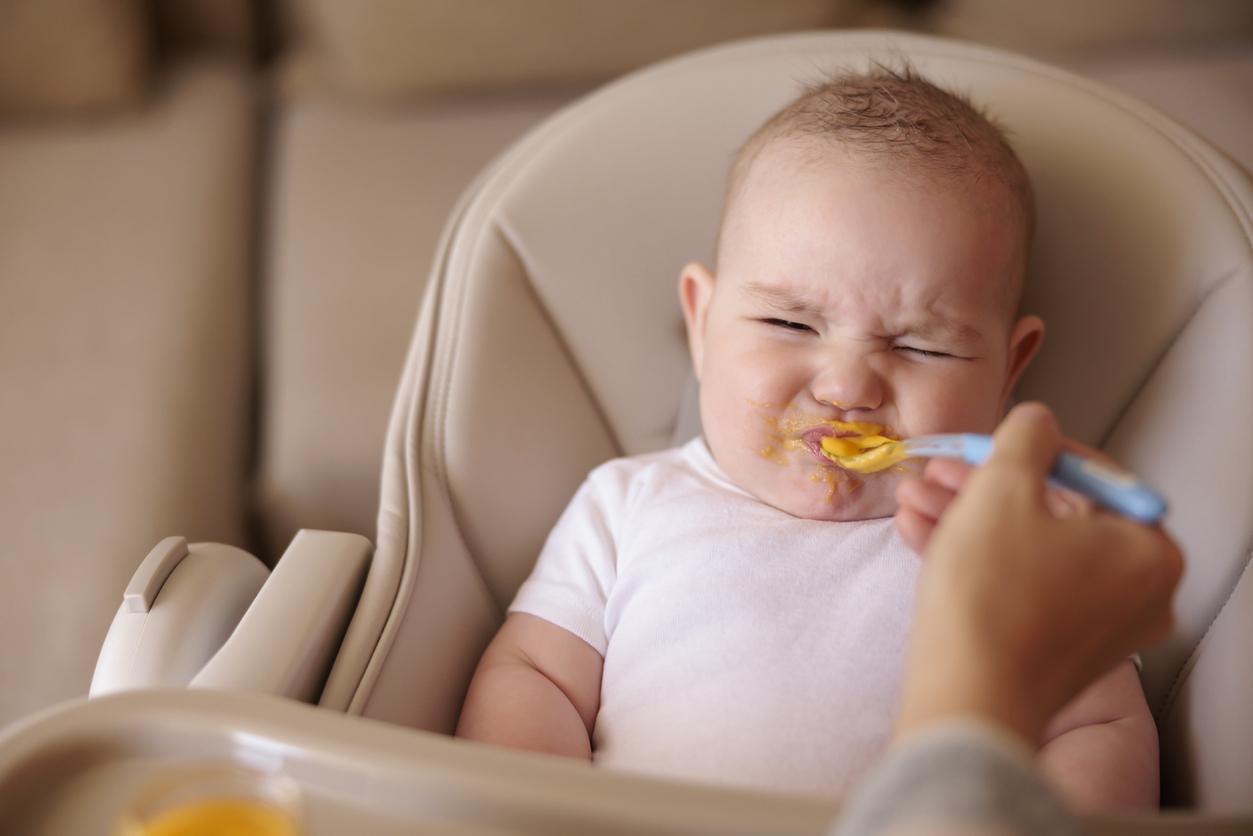Diversify as much as possible, do not forget fat, ban soy… The High Council for Public Health (HCSP) has updated the dietary guidelines for parents with children aged 0 to three years.

- The first three years are essential for instilling good eating habits in children.
- The new official recommendations emphasize food diversification, while proscribing certain foods for children.
“In terms of food, the period between the birth of the child and its 36 months is a very important transition stage”, explain in the preamble the experts of the HSCP, who publish new official recommendations on toddler nutrition. It can be broken down into 3 phases: from birth to 4 months, from 4 to 12 months and from 12 to 36 months.
From birth to 4 months: only milk
All the experts agree on the importance of giving only milk during the first 4 months of the child, whether through: exclusive breastfeeding (preferably at the breast), so-called “mixed” breastfeeding (which alternates mother’s milk and bottles of special infant milk sold in shops), or only milk from infant formula.
From 4 to 12 months: diversify foods as much as possible
In order to reduce the risk of obesity, infections, celiac disease and food allergies, it is preferable, for children born at term, to start food diversification after the age of 4 months and before 6 months.
The types of food to introduce are: dairy products, fruits, vegetables, potatoes, cereal products, pulses, meats, fish, cooked eggs, and also, as scientists point out: “fats, which are most often little consumed by children under 3 years old, even though they are essential.”
Once diversification has begun, it is recommended to introduce major food allergens such as dairy products, eggs and peanuts without delay, whether the child is at risk of allergy (due to his history family) or not.
Food groups can be introduced at the same time (no particular order or rhythm recommended) by offering different foods daily and taking into account the seasonality of foods.
The foods offered during the food diversification can be homemade or bought in the store, “but homemade foods are to be preferred: they can offer the opportunity for a greater variety of textures and flavors while corresponding to family socio-cultural habits, and they also make it possible to control the ingredients used”specifies the HCSP.
Finally, it is important to accompany the child towards a diet with varied textures. The window for introducing textured foods is between 8 and 10 months (and in all cases before 12 months) in order to best support the child towards normal chewing. Thus, sometimes from 8 months the child can start to eat small soft pieces and increasingly hard from 10 months. During this learning, it can be useful to let the child touch the food before putting it in his mouth.
The 2nd and 3rd years of life: gently getting closer to family food
During this period, the child acquires a varied diet, which will gradually approach that of the family table, in quantities adapted to his age. But he still has specific needs and limited physiological capacities, and will not eat like adults before the age of 3.
In order to promote healthy eating in adulthood, healthy eating habits should be developed in children, including a limited consumption of sugary products (such as sweets, dessert creams, ice creams, sugary drinks, etc.), fried foods, cold cuts, salt and savory products (such as crackers).
From the age of 12 months, the recommended rhythm is: breakfast, lunch, snack and dinner. This rhythm is a good habit that can be adopted very early, by avoiding giving food to children outside meals, even if they have eaten little during a meal.
Snacks in France are largely dominated by the consumption of sweet and/or fatty processed foods. It is strongly recommended to offer the child to consume interesting products from a nutritional point of view. “After 1 year, the snack in the middle of the afternoon may consist, for example, of a cereal product and/or fruit or a compote or a dairy product”, say public health experts. Only one snack is recommended. The double snack – that of the crèche or the childminder and that brought by the person who picks up the child or when returning home – is to be avoided.
Products to avoid in the diet of children under 3 years old
A number of foods are not suitable for feeding children under 3 years of age due to:
– their small size, i.e. small cylindrical or spherical foods that resist crushing such as nuts, peanuts and grapes should not be eaten whole because of the risk of choking;
– their microbiological risk, ie: honey for infants under one year old;
all raw or undercooked meats: minced meat and minced meat products should be thoroughly cooked (children aged 0 to 3); raw milk and raw milk cheeses, with the exception of cooked pressed cheeses such as Gruyère or Comté; raw eggs and raw or undercooked egg products (such as homemade chocolate mousse and mayonnaise); raw shellfish and raw fish.
– their contaminant content, i.e. chocolate-based products.
– the presence of certain ingredients such as coffee, tea, caffeinated sodas and so-called energy drinks, sweetened drinks and sweeteners in general.
Also note that:
– Soy products should also be limited, due to their genistein content.
– No supplementation (vitamins, food supplements, etc.) should be given to a child without a medical prescription.
– Infant formulas should not be substituted by plant-based drinks in children under one year of age, even when these are fortified with calcium.
– The nutritional composition of cow’s milk and milk from other mammals (such as goat, sheep or mare) is different from that of breast milk and does not meet the minimum and maximum recommended values for all the nutrients for toddlers. Semi-skimmed milk (insufficient lipid composition) is not recommended.
“In any case, it is recommended to use natural, sugar-free and unflavoured products”, insist public health experts.
.

















